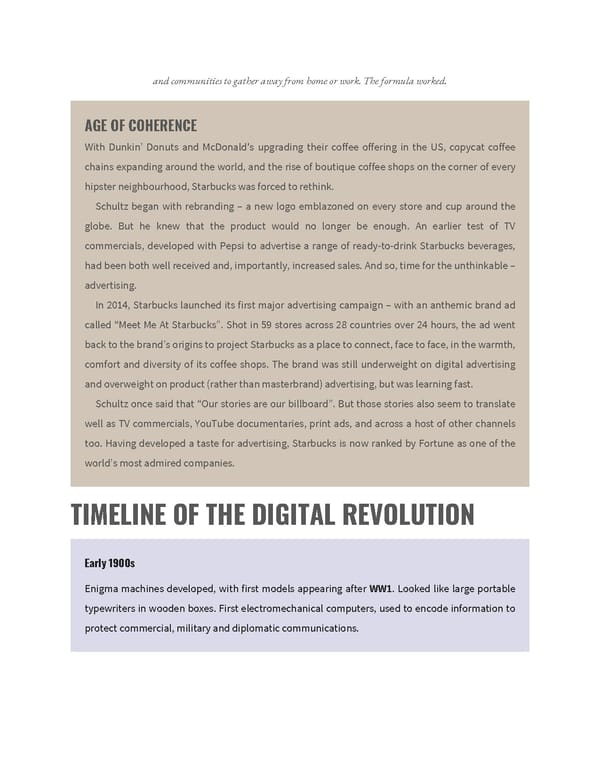and communities to gather away from home or work. The formula worked. AGE OF COHERENCE With Dunkin’ Donuts and McDonald's upgrading their coffee offering in the US, copycat coffee chains expanding around the world, and the rise of boutique coffee shops on the corner of every hipster neighbourhood, Starbucks was forced to rethink. Schultz began with rebranding – a new logo emblazoned on every store and cup around the globe. But he knew that the product would no longer be enough. An earlier test of TV commercials, developed with Pepsi to advertise a range of ready-to-drink Starbucks beverages, had been both well received and, importantly, increased sales. And so, time for the unthinkable – advertising. In 2014, Starbucks launched its first major advertising campaign – with an anthemic brand ad called “Meet Me At Starbucks”. Shot in 59 stores across 28 countries over 24 hours, the ad went back to the brand’s origins to project Starbucks as a place to connect, face to face, in the warmth, comfort and diversity of its coffee shops. The brand was still underweight on digital advertising and overweight on product (rather than masterbrand) advertising, but was learning fast. Schultz once said that “Our stories are our billboard”. But those stories also seem to translate well as TV commercials, YouTube documentaries, print ads, and across a host of other channels too. Having developed a taste for advertising, Starbucks is now ranked by Fortune as one of the world’s most admired companies. TIMELINE OF THE DIGITAL REVOLUTION Early 1900s Enigma machines developed, with first models appearing after WW1. Looked like large portable typewriters in wooden boxes. First electromechanical computers, used to encode information to protect commercial, military and diplomatic communications.
 Ogilvy on Advertising in the Digital Age Page 48 Page 50
Ogilvy on Advertising in the Digital Age Page 48 Page 50